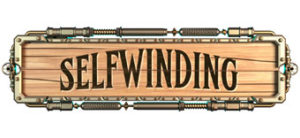Even though I’m an editor for hire, I firmly believe in self-editing. Each month I’m going to drop a tip for developing your ability to edit your own work or identify things to look for as you edit. Make sure to check out all the DIY Edit Tips to improve your self-editing.
03 Blank Slate: Setting
When an editor or a reader engages your manuscript, they are a blank slate regarding the details of your world. Even the best synopsis will still leave the reader without the full depth and scope of your character and setting. Putting yourself in the role of the blank slate is a great way to make sure the world you write is as vivid and detailed as the world you imagine.
Picture each setting using only what is described on the page. All other areas should be black in your mind. For example, when a character enters a room, pay attention to how much of the room is described. Do you have a sense of the space the character will be navigating? What about the obstacles the character will have to move around or interact with? Do you know what the room is used for? What does the room tell you about the owner (rich/poor, extravagant/practical, neat/messy)?
As you continue reading, think about what questions arise, and then make a list of what details you need to add. For example:
- Your character winds around the whole room, but on initial introduction you never mentioned the furniture was crowded. Add that.
- Your character shuts the drapes, casting the room into darkness. Add that the only light is from the window.
- Your character notes several scenes later that a couch is just like the one in the last room they were in. Add the couch in the previous room.
- Your character turns down the radio, but has been having a conversation throughout the scene. Add how loud the radio is at the start of the scene.
After you have built the mental picture of the space from what’s on the page, consider if there are any important details you see in your writer vision that are missing from the written version. Don’t forget to engage senses other than sight—what is the temperature of the room, what sounds are there, is there a smell drifting in? Building your written locations as though you’ve never seen them in your mind’s eye is a great way to figure out what other details you need to include.
Like what you read? Help me continue making this content by leaving a tip through Ko-fi.
